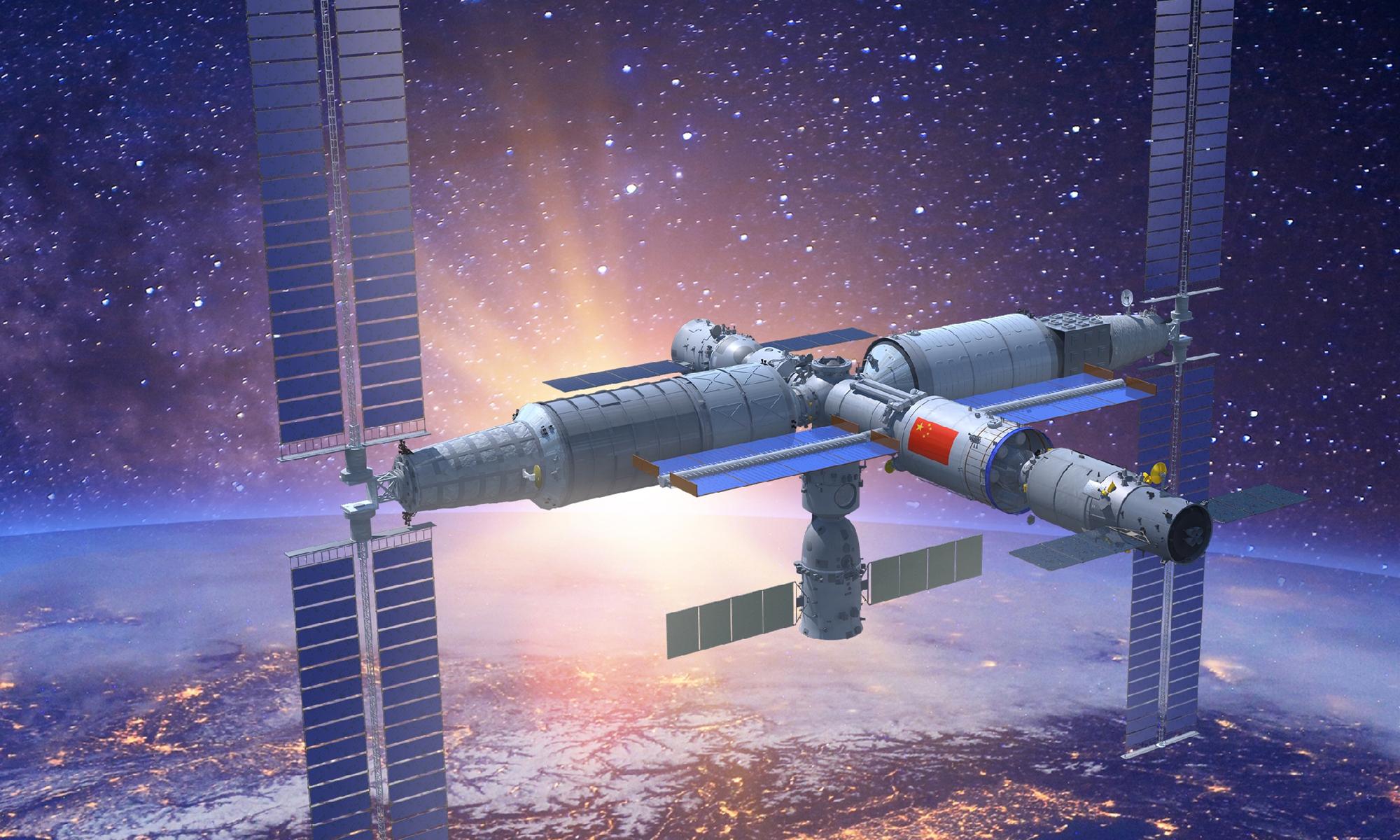
Photo: CAST
China has successfully completed final tests on the last set of high-thrust hydrogen-oxygen engines that will power the Long March-5B Y4 carrier rocket to ferry the country's space station Mengtian laboratory module into orbit, the Global Times learned from project insiders on Tuesday.
Researchers and engineers with the 101 Research Institute, the 6th Academy of the state-owned major aerospace contractor China Aerospace Science and Technology Corp (CASC), ran a 100-second test of the state-of-the-art liquid-propellant engine on Monday. The results showed that the craft's performance met the mission requirements, the institute told the Global Times on Tuesday.
Next, the engine will be delivered to the rocket general assembly, and then the Long March-5B Y4 rocket will launch the Mengtian laboratory module into orbit later this year, according to the institute.
It was the second running test of the powerful engine, after a smooth 520-second test on March 10.
Ma Liya, director of the science and technology office with the institute, told the Global Times on Tuesday that the 50-ton-thrust engine will work in pairs as the first stage of the Long March-5 rocket series.
According to Ma, the success of the final calibration test showed that the Long March-5B Y4 rocket has entered the final preparation stage before being transferred to the launch site. The series will carry out the launches for the country's space station Mengtian and Mengtian laboratory modules in 2022.
The institute further disclosed in a statement it provided to the Global Times that it will conduct tests for the engine more than 20 times in order to verify its reliability and lay the foundation for the launch of the Xuntian space station telescope module.
China is expected to complete the construction of its orbiting space station by the end of this year. The space station will form a T-shaped structure with a cabin of over 110 cubic meters, allowing a long-term stay for a crew of three and short-term stays for six people. After completing functional and performance tests in orbit, the space station will move to the operational phase.
Zhang Wei, director of the Space Utilization Development Center, Technology and Engineering Center for Space Utilization, under the Chinese Academy of Sciences, revealed that the Wentian module will host a dozen life science experiments, including one of an artificial closed ecosystem comprised of tiny fish, microbes and algae, media reported on March 17.
Mengtian will carry the world's first space-based cold atomic clock system consisting of a hydrogen clock, a rubidium clock and an optical clock. "If successful, the cold atomic clocks will form the most precise time and frequency system in space, which should not lose one second in hundreds of millions of years," said Zhang.
China is conducting long-term and systematic planning for space experiments in four important areas: space life-sciences and human research; microgravity physical science; space astronomy and earth science, and new space technologies and applications, said Gao Ming, director of the Technology and Engineering Center for Space Utilization under the Chinese Academy of Sciences and general director of the space application system of China's manned space program.
These scientific research facilities have been developed to support more than 1,000 in-orbit research projects, Gao said.




